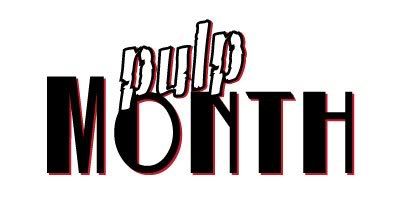
I don’t normally review video games on this site, but when it comes to ninjas I think that they are a little hard to ignore.
When in comes to video games, ninja are about as old as the games themselves. I have no clue where they first made their appearance (although
Moby Games tells me it’s
Ninja Warrior for the TRS-80), but it was in the late eighties that the two longest standing ninja franchises were born.
SEGA got to the arcades first with the release of
Shinobi in 1987. Joe Musashi uses his shuriken throwing, sword swinging, and ninja magic-wielding as he tries to fight the criminal syndicate Neo Zeed. The game is a classic of the side-scrolling arcade genre and was regularly known for its more intelligent enemy motions. The game would quickly be ported to every system available at the time, even SEGA rivals Nintendo.
The very next year,
Shinobi met its greatest competitor in the form of
Ninja Gaiden. The original arcade
Ninja Gaiden was a side-scrolling beat-’em-up in the tradition of
Double Dragon with only a hanging kick and an occassional ninja sword to differentiate it from the rest of the genre. It was also well known for its product placement, as Coca-Cola signs appeared
everywhere. But it was probably best known for its continue screen, where your character faces a descending saw blade that slices the character in half should you not continue. It would have been utterly forgettable, if not for an NES port a year later.
The NES version of
Ninja Gaiden revolutionized action games in a way still being built on after two decades.
It may not quite have been the first game to do it, but
Ninja Gaiden brought cut scenes to the masses as it unfolds the growing plot of Ryu Hayabusa’s quest level after level. It also borrowed very heavily from
Shinobi as it moves to a 2D side-scrolling perspective and ninja magic becomes an integral part of the franchise.
Both games would spawn sequels over the next several years.
Ninja Gaiden gained two more games to complete the franchise as a trilogy with
Ninja Gaiden II: The Dark Sword of Chaos and
Ninja Gaiden III: The Ancient Ship of Doom. Each game got increasingly hard. (While I beat the much maligned difficulty of the first
Ninja Gaiden, I could only get to the second to last level in
Ninja Gaiden II and not even to the halfway point of the third game.) A prequel game,
Ninja Gaiden Shadow, came out for the Game Boy, but was ignored by most players. In a strange turn, several parts of the world got adaptations of the first game made for various SEGA systems as well, by SEGA themselves.
Meanwhile,
Shinobi became the hallmark of the Genesis with the sequels
Revenge of Shinobi and
Shadow Dancer: The Secret of Shinobi. Each game brought the graphics level up another notch.
Shinobi became one of the prettiest side-scrollers available in its era. Three more (mostly original) games appeared for the Game Gear. The franchise moved forward on to Sega Saturn with the release of the final original side scroller in the franchise, the absolutely gorgeous
Shinobi Legions. I still have fond memories of playing this one in a store Japan months before the Saturn’s US release. It wasn’t as mind-blowing an experience as the PlayStation
floor at Sony headquarters, but I digress. With this game, Joe was gone, replaced by Sho, and many of the franchises fans went with it.
Both games remained mostly dormant for two generations of video game systems until
Shinobi returned much transformed for the PlayStation 2.
Ninja Gaiden would follow, becoming one of the first major Japanese-developed releases for the XBox, in 2004. Call me old fashioned, but I didn’t think either franchise captured the spirit of the originals, but that didn’t stop anyone from buying either franchise. Two more
Ninja Gaiden games followed with
Ninja Gaiden Dragon Sword for Nintendo DS and
Ninja Gaiden II for XBox 360. Less fortunate was
Shinobi. The female-centric follow-up proved less than satisfying for fans. 2004’s
Nightshade would be the last game in the franchise.
Shinobi and
Ninja Gaiden have now shaped two generations of gamers experience with ninjas. Perhaps more so than any other stories I review this week, they have had a major influence on the modern view of the ninja. While I cannot recommend the newer games to anyone other than very experienced gamers, the classic side-scrollers for both franchises come
Recommended.
Both
Ninja Gaiden
and
Shinobi
are available at Amazon by clicking their names here.











